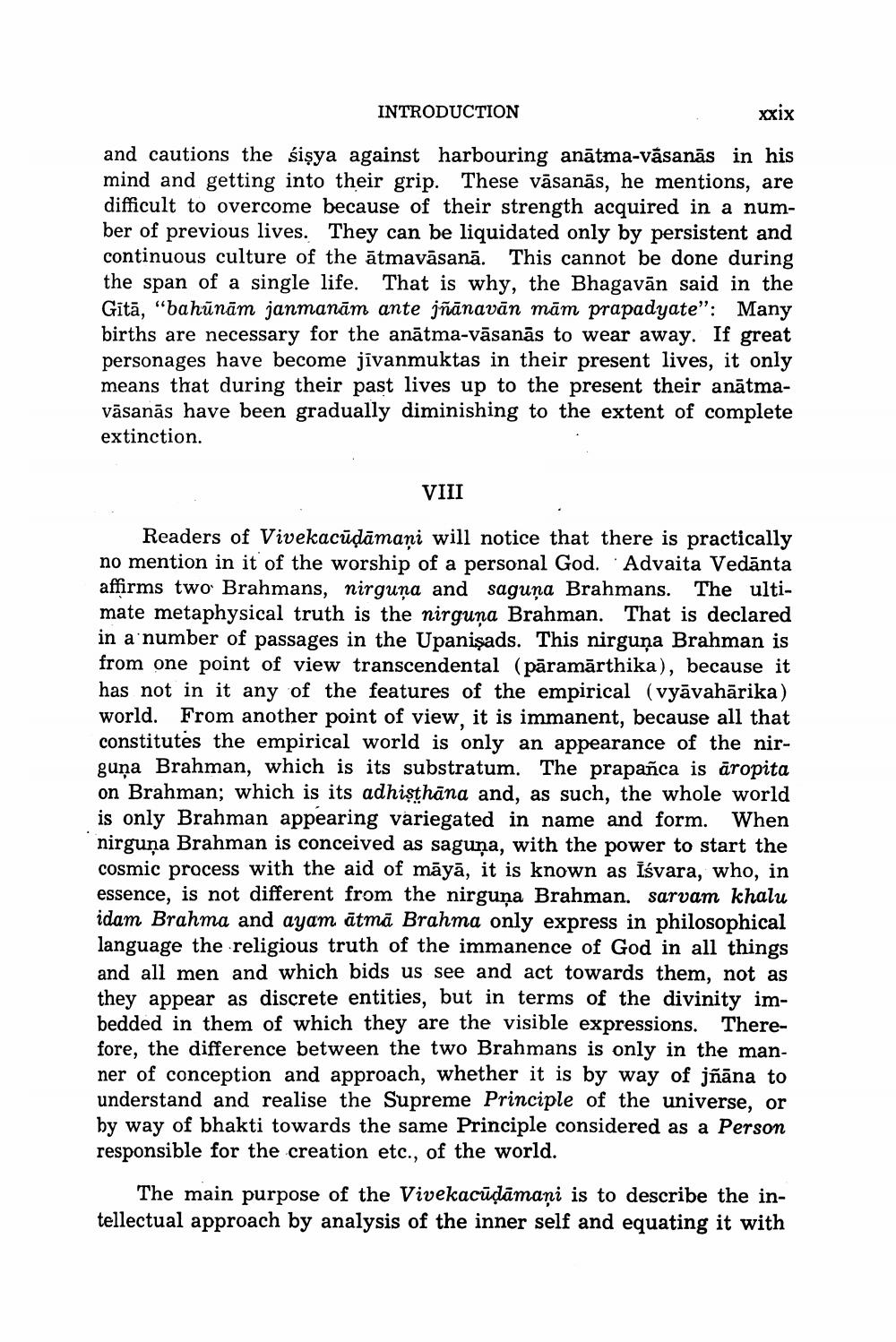________________
xxix
and cautions the śisya against harbouring anātma-vāsanās in his mind and getting into their grip. These vāsanās, he mentions, are difficult to overcome because of their strength acquired in a number of previous lives. They can be liquidated only by persistent and continuous culture of the ātmavāsanā. This cannot be done during the span of a single life. That is why, the Bhagavan said in the Gītā, "bahūnām janmanām ante jñānavān mām prapadyate": Many births are necessary for the anātma-vāsanās to wear away. If great personages have become jivanmuktas in their present lives, it only means that during their past lives up to the present their anātmavāsanās have been gradually diminishing to the extent of complete extinction.
INTRODUCTION
VIII
Readers of Vivekacuḍāmaņi will notice that there is practically no mention in it of the worship of a personal God. Advaita Vedānta affirms two Brahmans, nirguna and saguna Brahmans. The ultimate metaphysical truth is the nirguna Brahman. That is declared in a number of passages in the Upanisads. This nirguņa Brahman is from one point of view transcendental (pāramārthika), because it has not in it any of the features of the empirical (vyāvahārika) world. From another point of view, it is immanent, because all that constitutes the empirical world is only an appearance of the nirguna Brahman, which is its substratum. The prapañca is āropita on Brahman; which is its adhisthāna and, as such, the whole world is only Brahman appearing variegated in name and form. When nirguna Brahman is conceived as saguna, with the power to start the cosmic process with the aid of māyā, it is known as Iśvara, who, in essence, is not different from the nirguna Brahman. sarvam khalu idam Brahma and ayam ātmā Brahma only express in philosophical language the religious truth of the immanence of God in all things and all men and which bids us see and act towards them, not as they appear as discrete entities, but in terms of the divinity imbedded in them of which they are the visible expressions. Therefore, the difference between the two Brahmans is only in the manner of conception and approach, whether it is by way of jñāna to understand and realise the Supreme Principle of the universe, or by way of bhakti towards the same Principle considered as a Person responsible for the creation etc., of the world.
The main purpose of the Vivekacūḍāmaņi is to describe the intellectual approach by analysis of the inner self and equating it with




